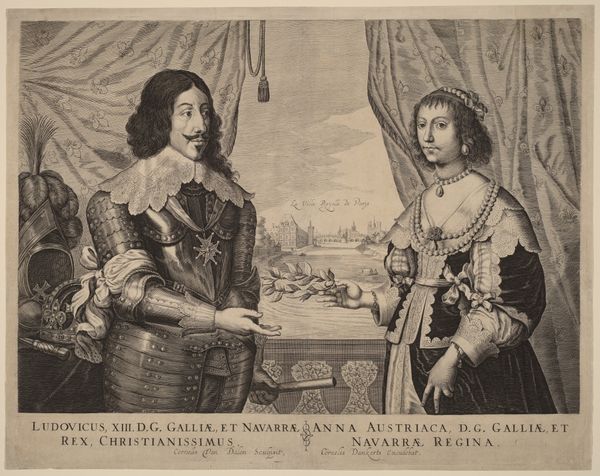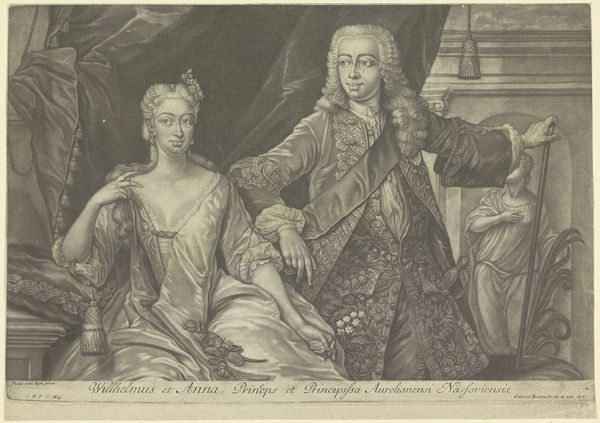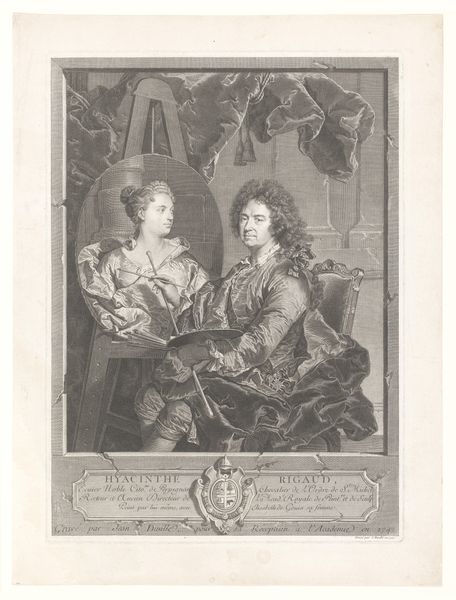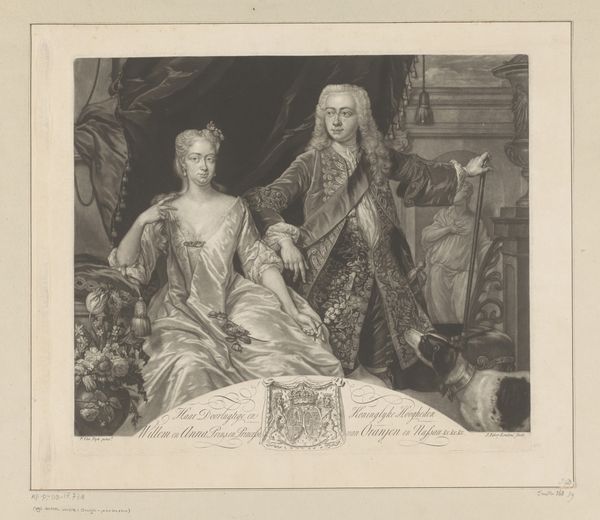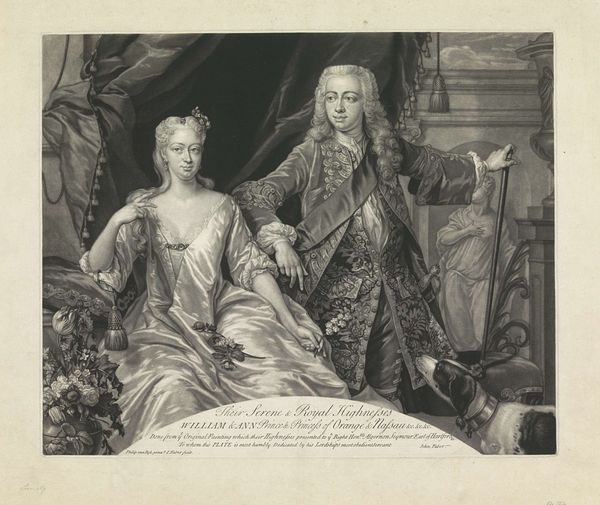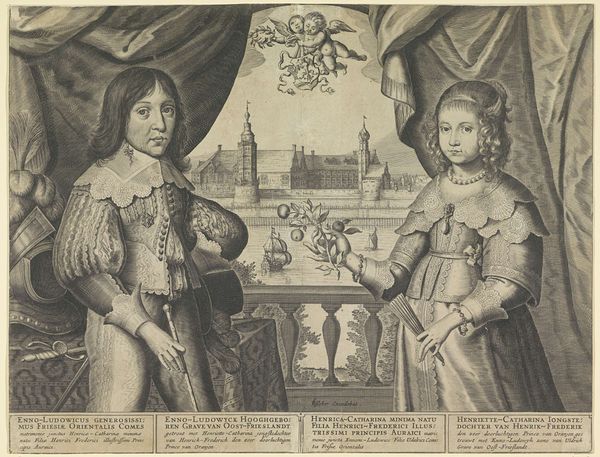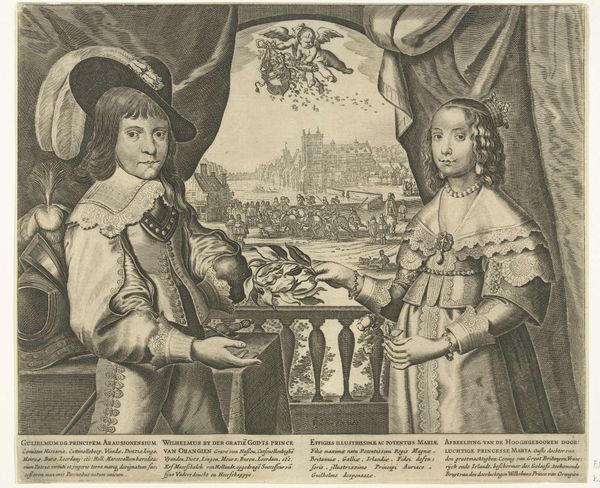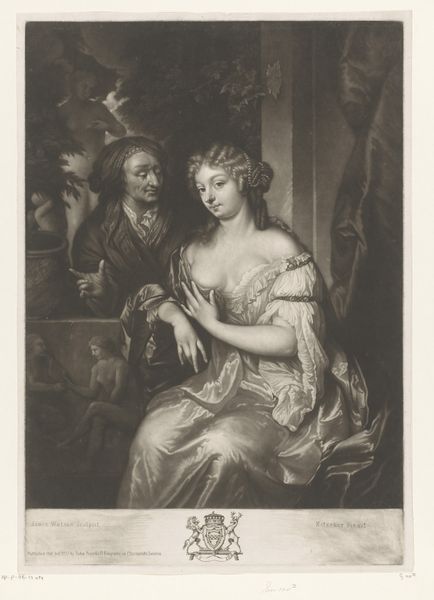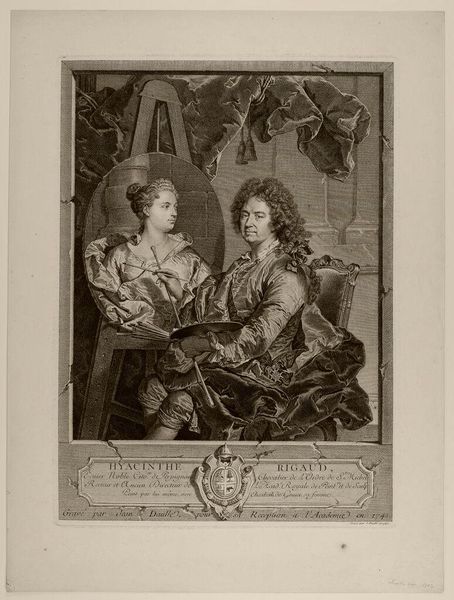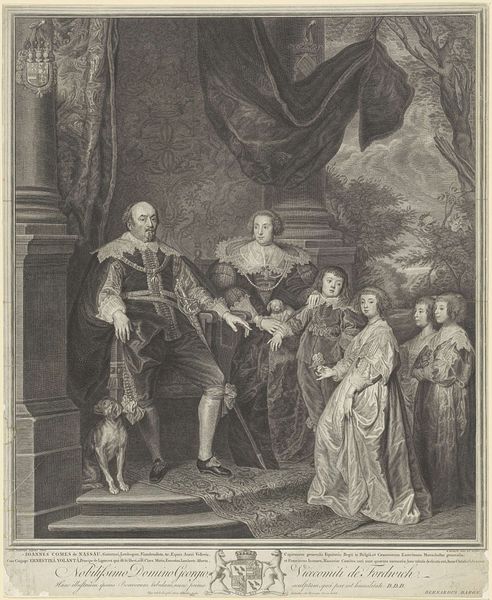
Koning Karel I van Engeland met zijn vrouw Henrietta Maria van Bourbon 1634
0:00
0:00
print, engraving
#
portrait
#
baroque
# print
#
portrait drawing
#
history-painting
#
engraving
Dimensions: height 414 mm, width 559 mm
Copyright: Rijks Museum: Open Domain
Curator: This engraving from 1634 by Robert van Voerst, titled "King Charles I of England with his wife Henrietta Maria of Bourbon," presents the royal couple in a formal double portrait. It is currently held in the Rijksmuseum collection. Editor: My immediate impression is the stark contrast and delicate detail achieved in this print. The interplay of light and shadow gives their figures a subtle, refined quality despite the inherent limitations of the medium. It is formally very poised. Curator: Precisely. This is an exquisite example of Baroque portraiture rendered through the detailed labor of engraving. The level of detail speaks to the societal importance placed on representing the monarchy, doesn’t it? Look at the intricacies in their garments, the rendering of lace, the very palpable sense of royal wealth that is literally worn. Editor: Yes, observe how Voerst used line and texture to create volume and depth in their clothing and the surrounding drapery. It lends the work an almost tactile dimension, despite its two-dimensionality. The way light reflects off the imagined satin feels quite striking for its age. Curator: Consider, also, the political context: portraiture served a crucial role in shaping public perception. The image itself functions as a form of political currency. Note the crown and globe slightly off to the side. Editor: Absolutely. There's a delicate balance here between the symbols of power, like that crown, and the softness in their expressions, achieved through very specific formal choices, almost classical in its sensibility. This could serve as commentary on governance and expectations for royals and aristocracy. Curator: Perhaps that crown placement offers insight, too: a subtle visual nod toward their power while subtly acknowledging it remains in their shadow as they embrace. Van Voerst’s engraving exemplifies how the production of art, in this case the production of royal image, served very clear political functions. Editor: Seeing this Baroque work underscores how formal artistic strategies not only portray likeness but communicate so much about power dynamics through light, detail and arrangement. I wonder what other secrets future gazes may discover from observing. Curator: It gives pause to contemplate just how physical actions can construct cultural narratives, from commissioning the image to its material creation to its societal impacts and influence. Editor: Indeed, it's been illuminating to discuss how its structural design lends itself to conveying that message.
Comments
No comments
Be the first to comment and join the conversation on the ultimate creative platform.
